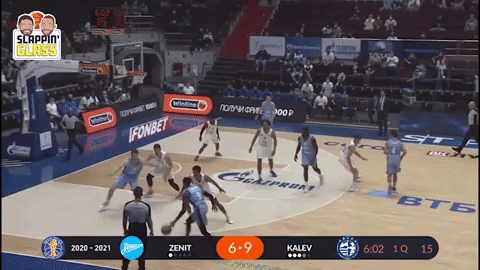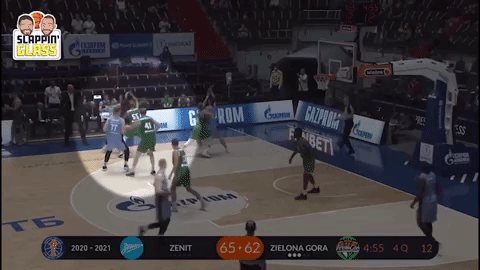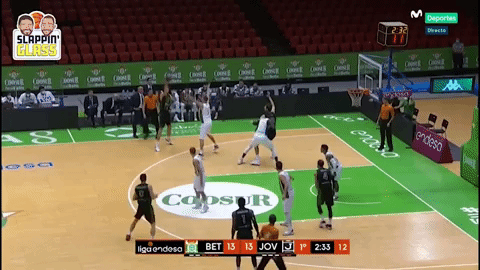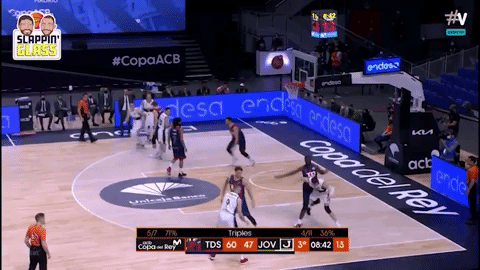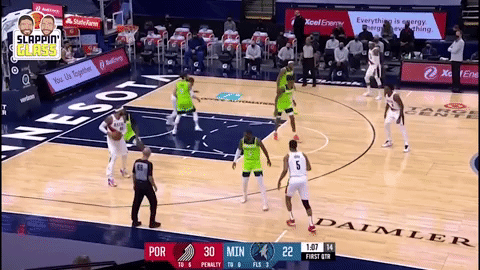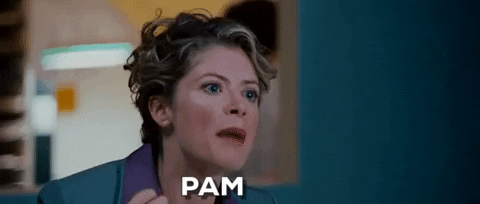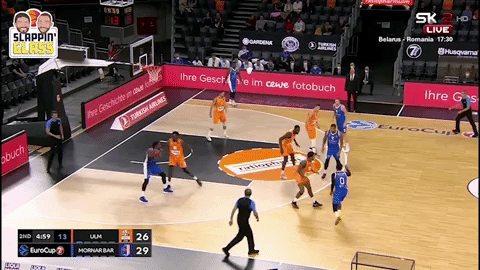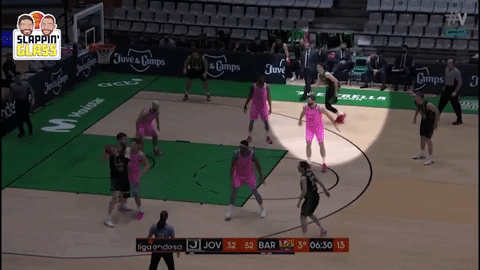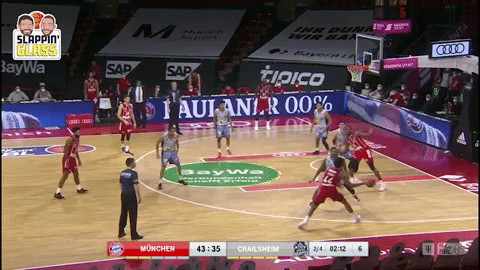European Post Actions: A Primer
Inverting Your Offense
Welcome to our “Sunday Mornin’ Newsletter”, where we explore basketball’s best ideas, strategies, and coaches from around the world.
Today’s edition will cover:
European Post Actions: A Primer
Fran Fraschilla Podcast Episode: March Madness “Coach’s Primer”
Best Sets of the Week
Teams to Watch/Interesting Reads
Let’s dive in…
March Madness Primer: Fran Fraschilla
For the next few weeks, the U.S. will be fully engulfed in college basketball’s “March Madness”. As your reading this, I’m sure your bracket is completely busted (like our’s) and your Aunt or Uncle in your Family Pool, who knows very little about college basketball, sits atop the standings because they “really liked Oral Roberts’ uniforms” or “had a friend go to North Texas for a semester”.
Before all the bracket-busting and fun started we were excited to welcome ESPN’s Fran Fraschilla back to the podcast for a “March Madness, Coach’s Primer” episode. We spent the first 30 minutes discussing the best trends Coach Fraschilla saw over the course of the season, as well as the difference between having great Guards vs. Bigs in the tournament, preparing a team for “Crunch Time”, KenPom analytics, and much more. We also had a lot of fun in a “March Madness” edition of “Start, Sub, or Sit?!”
Coach Fraschilla also ends the episode with some great thoughts about the excitement and importance of having the Tournament back this year.
You can get the episode here…
European Post Actions
When talking about Post Play and the value it has within an offense, a popular discussion that arises, especially when it comes to analytics, is how inefficient a Post-Up can be as scoring option. Obviously, to quote every guest we’ve ever had on the podcast, “it depends” on who the player is and the time/score of the game. That said, a topic that often gets overlooked when it comes to Post Play, is how efficient it is as a spot to facilitate from.
For a reference, Nikola Jokic of the Denver Nuggets has a PPP (Points Per Possession) efficiency of 1.15 on Post-Ups to Score, and a PPP of 1.34 on Passes out of the Post-Up (per InStat). Even for a player not of Jokic’ ilk, whether it’s a Big or a Guard, the Post has still proven to be one of the best spots on the floor to facilitate offense from.
Over the past couple of months we’ve been compiling some of our favorite actions that teams in Europe have been running from a Post Catch. We’ve broken them down into four areas in this newsletter:
Actions for the Passer
Actions at the Strongside Elbow
Actions at the Weakside Elbow
Actions on the Weakside
Aside from these actions, our full breakdown video shows many other variations and options as well.
1. Actions for the Passer
Flare the Passer
A Flare Screen is always difficult to guard, and also a nice option for a shooter directly after a Post Entry pass…
Re-Screen the Passer
If the defense does a good job of guarding the initial Flare, then a Re-Screen for the same shooter is also effective at springing the shooter for a good look…
RIP Screen the Passer
Similar to the Flare, a quick, well-timed “RIP Screen” for the Passer is an effective way to both put pressure on the rim and create an open look for a shooter if there’s confusion from the defense on the RIP Screen.
Zooming In: Important to note in the above actions where the shooter is within the set. In the Flare and Re-Screen actions, the shooter is the Passer, and in the RIP action the Shooter is setting the RIP Screen, taking advantage of the gravity created when a shooter sets a screen.
Zooming Out: In all instances shown above and below, these actions can be taught as both “Automatics” or “Sets”. Depending on who throws the entry into the post, the great teams will run their “automatics” from that pass. These actions can also be orchestrated through a “Set Play”, where the offense is looking for a shot for a specific player.
2. Strongside Elbow Actions
Moving from actions designed specifically for the Passer, we’ll now move to the Strongside Elbow and some nice movement from that spot.
Elbow Split Action
After a pass into the post, getting into “Split” action at the strongside elbow is another tough situation for the defense to navigate through…
Like “Split” action run on the perimeter, the same options and general concepts apply here as well. One of the offensive players will slip or dive to the rim, while the other spaces back out to the perimeter after the “Split”. The timing and randomness of the cuts, coupled with the spacing on the backside by the other two players creates great back-cutting opportunities for the offense. And… going one-step further, even if the “Split” action doesn’t lead to a basket from the back-cut, it often creates a close-out situation for the offensive player popping back to the perimeter.
RIP to Side Pin
A close cousin to the RIP Screen for the shooter shown above, the “RIP to Side Pin” at the strongside elbow is another great way to both put pressure on the rim with a RIP Screen while also setting an extra screen for the shooter coming back to the ball…
This can be categorized as a “Screen the Screener” action, and, visualizing one-step further, another great option if the shooter isn’t open after that last “Side Pin” screen, is a slip to the rim for the “Side Screener” if his man stunt toward to help on the shooter, or flowing directly into a Grenade DHO and 2-Man game with the big and the shooter coming off the Pin.
Double Stagger Twirl
A hat-tip to Igor Kokoskov once again. If you want to run some complex action at or around the Strongside Elbow, here’s a great set from Coach Kokoskov for a shooter…
This set combines both a Flare for the Passer with a Double Stagger Twirl Screen for a Weakside shooter coming back to the ball…
3. Weakside Elbow Actions
Bilbao Action
Moving from the Strongside to the Weakside Elbow, we start with an action that is probably the most mispronounced word on the podcast when we discuss it… “Bilbao”. We’re still struggling with it…
The “Bilbao Action” combines a Flare for the Passer with “Split Action” on the Weakside Elbow…
They beauty of this action is the dual threat of the backdoor coming from the “Split” on the elbow followed by the other offensive player immediately sprinting off the strongside elbow screen from the big. To get really tricky, teams will also add a “Hook Screen” to the “Split” where the first cutter “Hooks” his cut into a screen and then slips to the rim. Here’s a look at that action and the gravity/confusion it creates…
Brazilian Triple Post— Curl/Backdoor
We did a full breakdown of the “Brazilian Triple Post Action” a couple weeks ago (you can read/watch/listen to it HERE), but this offensive design from a post catch also utilizes a screen/action at the Nail and closer to the Weakside elbow. Here’s a quick look at the “Curl” off of that screen…
And… if the defender tries to “Top-Lock” or cheat on the screen, the backdoor is the next option…
4. Weakside Actions/Zone Concepts
The last set of Post Actions we’ll look at are ones that come from a Weakside Cut, Flash, or Screen. Many of these actions are also effective when attacking the backside of a traditional Zone, and after Dallas Maverick Assistant, Jenny Boucek, discussed this concept on the podcast last week, we’ve began thinking about it that was as well.
Dunker Dive and Space
The first, and simplest weakside action is to dive the opposite big man into the “Dunker Spot” and space the other three shooters around the perimeter. Some coaches like to keep the other three shooters “above the break” and out of the opposite corner since it’s a difficult pass for the post to see/throw…
Zooming Out: Though this is a “simpler” looking action, it is highly effective for a post who can score and is expecting a double team to come at some point while he/she operates. This alignment simplifies the decision-making process for the post as to where to pass the ball out to when the double team comes.
Weakside Flare
Much like the Zone Concept of setting a Flare on the backside zone defenders, this concept can also be applied on a post catch as the defense sinks toward the ball…
Weakside— Baseline Cuts and Flashes
Instead of “Flaring” for the shooter in the farthest offensive spot, offenses can also “Baseline Cut” that player as well…
It doesn’t have to be the baseline player cutting, but someone from the opposite wing or slot who “flashes” into a gap, thus opening other spots on the perimeter for his/her teammates to fill into. More of those cuts are shown in the video.
Our full breakdown video below covers many more actions from all of these different locations after a post catch including:
Post PNR’s
Posting Guards
Post Grenade DHO’s
And much more
You can view that here…
Best Sets of the Week
Some of the best we saw this week including FC Barcelona (Spain), Texas (NCAA), UCLA (NCAA), BC Nizhny Novgorod (Russia), Loyola Chicago (NCAA) & Cairns Taipans (Australia).
Teams to Watch/Interesting Reads
Some teams we enjoyed watching:
Texas (NCAA D1)
Colorado School of Mines (NCAA D2)
BC Nizhny Novgorod (Russia)
Interesting Reads:
And a final quote we’re thinking about.
“Everything good needs time. Don’t do work in a hurry. Go into details; it pays in every way. Time means power for your work. Mediocrity is always in a rush; but whatever is worth doing at all is worth doing with consideration. For genius is nothing more nor less than doing well what anyone can do badly.” Amelia Barr
Thank you for reading and have a great week coaching. We always appreciate a share if you’re enjoying this newsletter. Thanks!
Dan and Pat


